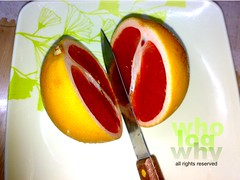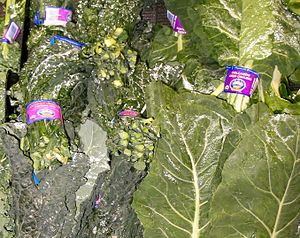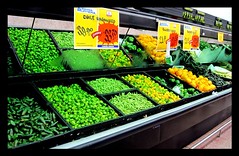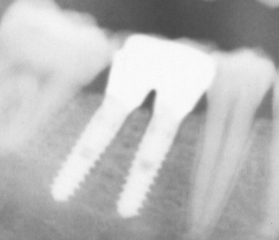 Image via Wikipedia
Image via Wikipedia
Regular
veterinary care is an essential part of keeping your dog or cat healthy. You should take your pet to the vet at least once a year for a check-up, and more often if an illness or emergency situation arises.
Give Your Pet the Longest, Healthiest, Happiest Life Possible
pets
Save Your Money Save Your Family
Choose healthy, natural
pet food and treats from GreenerWiener.com!
You’ll save money on vet bills while keeping your cat or dog healthy and strong.
Visit GreenerWiener.com now to view their unique line of all-natural pet products to enhance the
health and well-being of your furry little ones.
greener wiener pet products
On average, dog owners spent $356 on veterinary visits in 2007, the most recent year for which data is available, according to the American Veterinary Medical Association, while cat owners spent $190. But if your pet has a serious illness or accident, vet bills can easily skyrocket to thousands, and even tens of thousands, of dollars.
Further, for the 33 percent of dog owners and 56 percent of cat owners who own more than one pet, veterinary bills are doubled, tripled or more. These costs can be steep even in the best economic times, but with many still struggling financially from the recession, vet bills can be completely unmanageable.
There are, however, some steps you can take to save money on vet care while keeping your pet healthy and strong.
5 Tips to Save Money Veterinary Care
1. Take Your Pet to the Vet at Least Once a Year
You don’t want to be penny wise and pound foolish; while a yearly vet exam will cost you a bit of money, it may help you prevent an illness in your pet, or catch one before it’s progressed too far. Yearly dog and cat checkups can identify problems early, when they are more likely to be treatable, instead of after your pet becomes sick and you have to shift to crisis mode.
2. Feed Your Pet a Healthy Diet
Giving your pet high-quality, species-appropriate food is absolutely essential to keeping him healthy -- and a healthy pet needs fewer visits to the vet.
However, many commercial pet
foods are heavy in refined carbohydrates. Neither dogs nor cats are designed to process this overload of excess grains. Further, a high-grain diet can lead to the over-production of insulin in your pet, which in turn can make it difficult for your pet to maintain the proper weight, and may lead to diabetes, osteoarthritis, cancer,
heart disease and other health problems.
Like humans, pets of all kinds need a varied diet, with fresh foods added, to function at their best.
dog food
What you feed your dog or cat can either boost his health or detract from it.
So feeding your pet "people food" like high-quality raw meats and veggies, supplemented with essential vitamins and minerals, can actually be very healthy for dogs and cats, provided the diet is properly balanced and varied.
Yet, why is it that so many of us still believe we are doing our pets a favor by feeding them only kibble or food that comes from a can? Heavy marketing on behalf of the pet food industry certainly plays a major role.
In reality, one of the best ways to feed your dog is using a species-appropriate diet, similar to the one they would find in the wild.
Fortunately, there are numerous high-quality brands of top-notch dog foods on the market that make this easy, and SixWise.com highly recommends viewing the select line of dog foods carried by GreenerWiener.com.
If you like the idea of feeding a raw diet, but aren’t sure how to jump in, an excellent starting point is Sojos Grain-Free Dog Food Mix.
This grain-free alternative to kibble is a wholesome pre-mix that you combine with raw meat and water to create a fresh, homemade dog food -- it's optimal nutrition for your dog with minimal effort on your part.
And you can be sure your dog is getting wholesome nutrition when you choose Sojos, as it's made with simple, honest ingredients like dried sweet potatoes, whole eggs and apples -- and absolutely no preservatives and nothing artificial. (If you have cats, Sojos also makes a European-Style Cat Food Mix that allows you to feed your cat the nutritious raw food he craves in just minutes a day).
Further,
the Honest Kitchen line from GreenerWiener.com makes all of their pet food recipes in a human-food plant to ensure the highest possible quality control and production standards. Their facility is FDA inspected -- and humans actually taste their foods as part of their Quality Control process!
Depending on your pet’s needs, you can try any of these healthy options:
*
Embark Grain-Free Dog Food: A turkey-based dehydrated raw food designed for active dogs and puppies.
*
Force Grain-Free Dog Food: A chicken-based, dehydrated raw food great for all adult dogs -- especially those with sensitive stomachs.
*
Prowl Grain-Free Cat Food: A dehydrated raw food with absolutely zero grains, which is just the type of natural diet your kitty will thrive on.
These foods truly make it simple to give your dog (and cat) the food he’s meant to eat.
3. Be Selective With Vaccinations
Many
veterinarians still vaccinate on the old every year schedule, but there is new research that indicates this is not only unnecessary but potentially harmful.
There are several reasons why many vets still vaccinate yearly, for instance many still believe that your pet is best protected by following the manufacturers' recommendations. Manufacturers mostly have not changed their recommendations because to do so costs hundreds of thousands of dollars to do the tests required by the USDA.
Also, the manufacturers are in business to sell vaccines. In the event of a pet getting a disease for which it is vaccinated, the drug companies will stand behind the veterinarian only if the pet is vaccinated according to label directions. Most vets don't want to get sued.
Some vets are not up to date on the very latest research. Some feel that the only way to get a pet in the door for an annual exam is by pushing the vaccines.
However, while rabies vaccines are often required by law, many other vaccines are optional. Talk to your vet about which vaccines are necessary and which are not, along with potential side effects of
vaccination.
4. Start a Regular Dental Care Routine
A whopping 80 percent of dogs and 70 percent of cats show signs of oral disease by the young age of 3, according to the American Veterinary Dental Society (AVDS). This is more than a problem of stinky breath, as tooth and gum problems can progress into serious health conditions for your pet.
This is why you should make sure you brush your dog or cat’s teeth daily. If your pet is not used to having their mouth touched, start by getting him or her used to having your hands in the area. Then gradually progress to using a specially designed pet toothbrush or fingertip brush, along with a toothpaste designed especially for pets.
Another excellent supplement to brushing that is highly recommended is Bluto’s Yummy Gum for dogs from GreenerWiener.com. This all-natural blend is exceptional for
oral hygiene, bad breath and periodontal disease.
Bluto's Yummy Gum contains hydrosols of peppermint and helichrysum, combined with anti-inflammatory (thyme linelol) and antibacterial (niaouli) ingredients to provide an effective and natural oral hygiene treatment.
There are certain treats that can be an effective tool to promote your dog’s dental health as well. Look for those that promote chewing, which can help scrape off soft tartar, and also offer healthy ingredients to support your dog’s health from the inside out, as well. Two nutritious options that Sixwise.com highly recommends are:
*
Elk Antler ChewsElk Antler Chews from GreenerWiener.com: Elk Antler Chews are the longest lasting chews available on the market. Made from naturally shed antlers that won't splinter like other hard chews, they're great for promoting healthy teeth and gums. They're also a 100% natural source of over 40 essential nutrients promoting strong bones and healthy joints.
*
Sam’s Yams Sweet Potato Dog ChewsSam’s Yams Sweet Potato Dog Chews from GreenerWiener.com: These whole thick slabs of dehydrated sweet potato provide excellent nutrition and a patent-pending hard, grooved surface that promotes dental health.
5. Don’t Smoke
Second-hand smoke is not only a threat to humans, it can impact pets too. Secondhand smoke has been linked to asthma, bronchitis, lymphoma and oral, nasal and lung cancers in pets, so quitting now will save you money on vet bills later.
What About Pet Health Insurance?
To combat the skyrocketing costs of caring for your pet's health needs, pet health insurance companies offer all kinds of plans for just about every pet. They operate a lot like health insurance for humans, complete with deductibles, co-payments, annual premiums and limitations for pre-existing conditions.
While only about 3 percent of pet owners have pet health insurance, if absorbing the cost of an emergency vet visit or surgery would be difficult, this many be an option for you to consider. Be sure to look into the plan you choose carefully, as many exclude services for breed-specific ailments, etc. You can find more tips on deciding whether pet insurance is a good investment for you here.
If pet insurance is not for you, there are still more methods that can save you money while keeping your pet in good health.
 Image by mikelehen via Flickr
Image by mikelehen via Flickr![Reblog this post [with Zemanta]](http://img.zemanta.com/reblog_e.png?x-id=75f60200-39a8-43ac-aa3e-a04f64ed46f1)

![Reblog this post [with Zemanta]](http://img.zemanta.com/reblog_e.png?x-id=001a4ef7-0693-4851-9660-9bae8943d0a6)

![Reblog this post [with Zemanta]](http://img.zemanta.com/reblog_e.png?x-id=7fd56275-d534-48e4-a885-fd611719b28e)

![Reblog this post [with Zemanta]](http://img.zemanta.com/reblog_e.png?x-id=09a34c8f-c562-4a03-8a0d-840433a9af43)

![Reblog this post [with Zemanta]](http://img.zemanta.com/reblog_e.png?x-id=9223f938-a0b0-4a8a-a65d-577e94dccecb)

![Reblog this post [with Zemanta]](http://img.zemanta.com/reblog_e.png?x-id=927da4b0-e02f-4e7f-beec-7849240062c8)

![Reblog this post [with Zemanta]](http://img.zemanta.com/reblog_e.png?x-id=3f1e8f41-198b-4a8d-9edf-855b6207e29f)

![Reblog this post [with Zemanta]](http://img.zemanta.com/reblog_e.png?x-id=4683b99e-4b5f-48e7-8111-c8fe3cb812e1)

![Reblog this post [with Zemanta]](http://img.zemanta.com/reblog_e.png?x-id=acf36fd7-f172-4d3b-8ad9-0a465a6d4644)

![Reblog this post [with Zemanta]](http://img.zemanta.com/reblog_e.png?x-id=5e8031c9-c7f5-4e22-92c5-bd9580bb9490)

![Reblog this post [with Zemanta]](http://img.zemanta.com/reblog_e.png?x-id=69670b48-5ad5-4ca6-b036-65383a11d9cb)

![Reblog this post [with Zemanta]](http://img.zemanta.com/reblog_e.png?x-id=7be84520-fc5f-4db6-8ca2-dbe1a27d4eec)

![Reblog this post [with Zemanta]](http://img.zemanta.com/reblog_e.png?x-id=54171e13-d666-4abc-a60d-25508e2ee638)

![Reblog this post [with Zemanta]](http://img.zemanta.com/reblog_e.png?x-id=780c16da-06ec-4211-88f5-3477a5e85d9f)

![Reblog this post [with Zemanta]](http://img.zemanta.com/reblog_e.png?x-id=91657a06-f977-4564-bc49-932870b7d1a3)





![Reblog this post [with Zemanta]](http://img.zemanta.com/reblog_e.png?x-id=59c05206-e25d-4b2c-b441-cab3e8926384)

![Reblog this post [with Zemanta]](http://img.zemanta.com/reblog_e.png?x-id=5d5b1ec1-0d27-4e06-848b-b3f6589440fd)